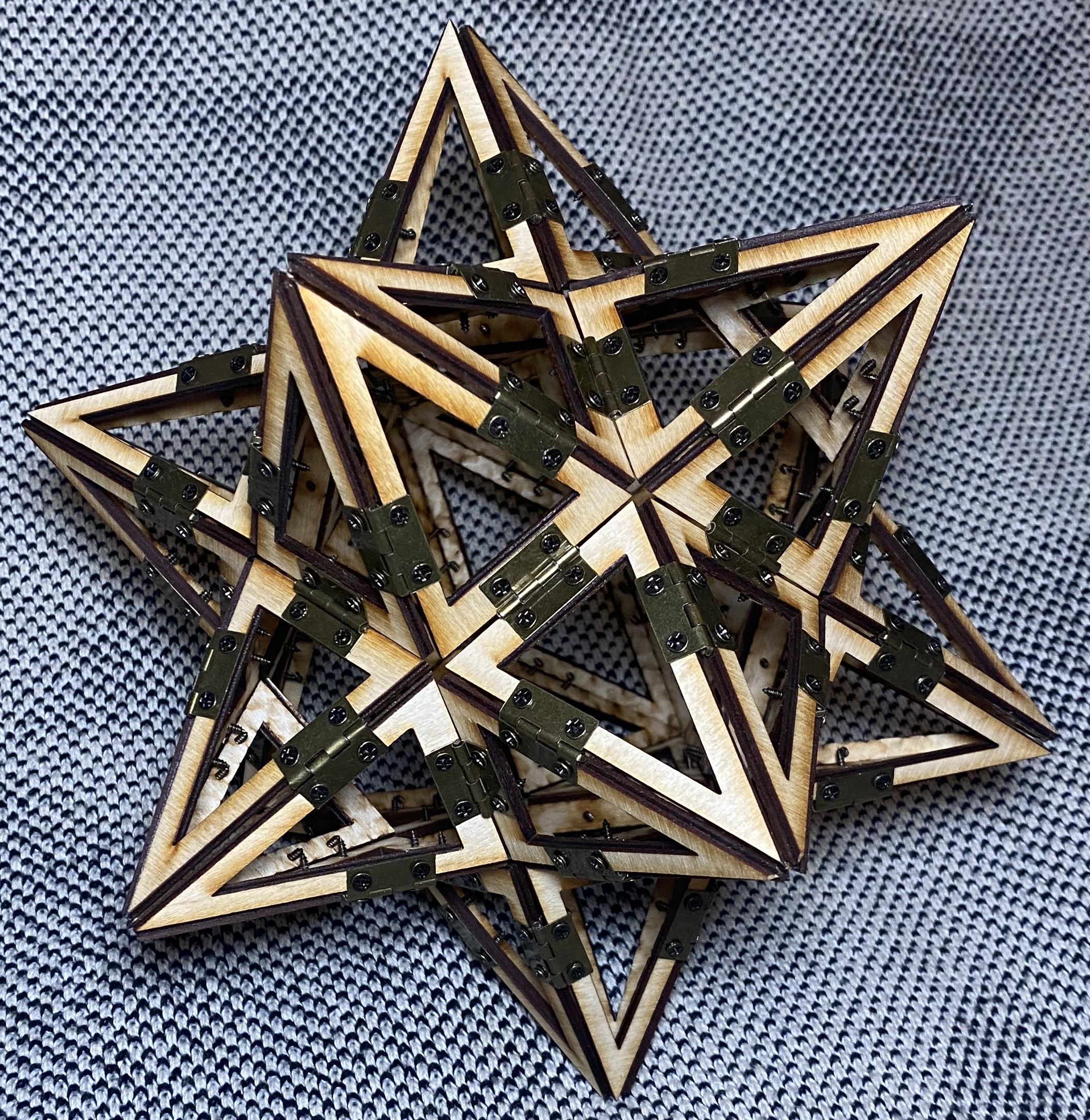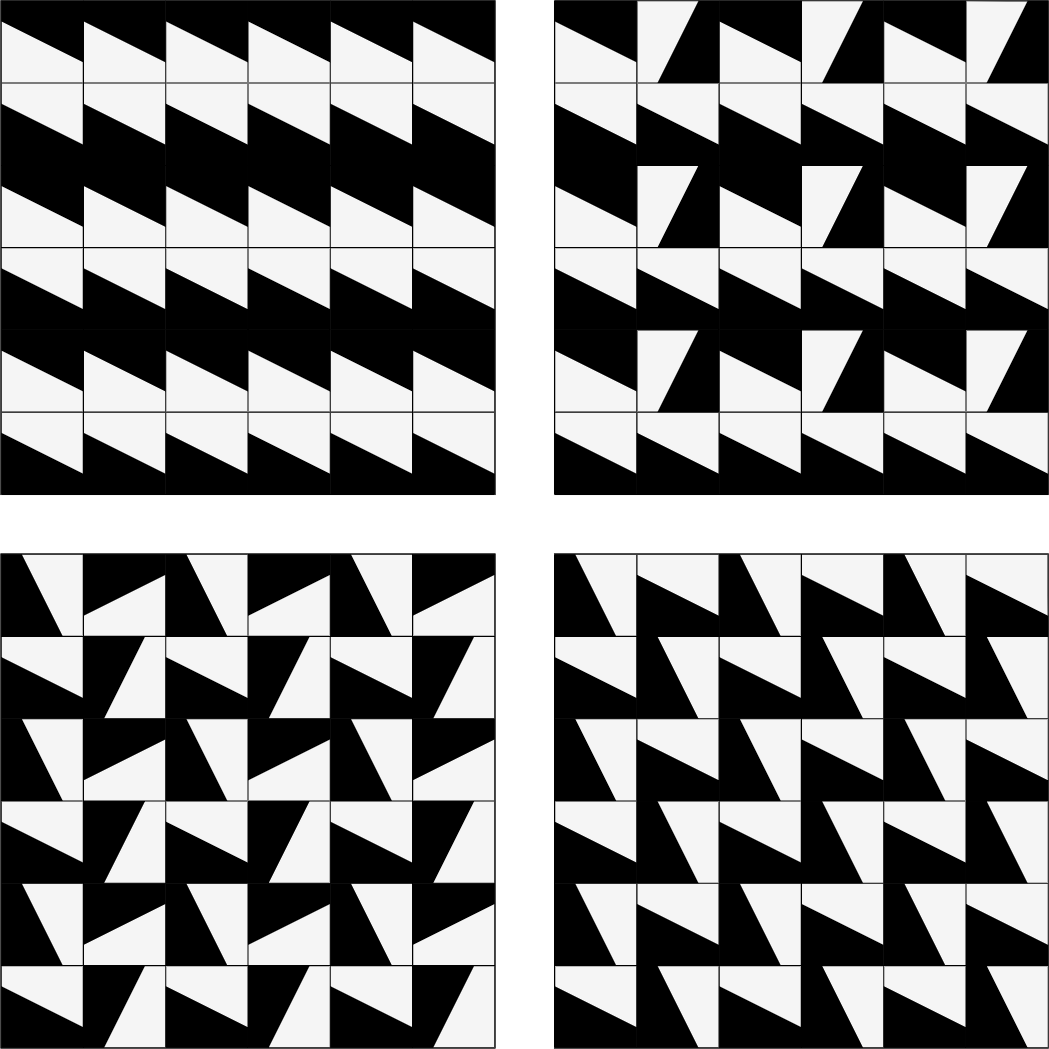Author: peterkagey
-

Hinged stellated dodecahedron
—
by
One of the earliest laser cutting projects I ever considered was when I was a graduate student: making a stellated dodecahedron. When I got to Harvey Mudd College and had the opportunity to use the laser cutter in the Makerspace for the first time, it was one of the first things I attempted. My initial…
-

JMM Exhibition of Mathematical Art
—
by
I was going through some old saved tweets during my move to Bluesky, and my favorite tweets to come across were those that mean something different to me know than they did when I saved them. In particular, this tweet from 2021 shows that 2021 JMM Exhibition of Mathematical Art catalog, and little did I…
-

Vowel cascades
—
by
I saw a post on Bluesky that proposed a problem that I had been thinking about for a long time! I figured that with the help of dictionary and a Python script, I could find the desired examples. One vowel Two vowels Three vowels Four vowels Python code Here’s my quick Python script to help…
-
Cube fractals
—
by
Robert Fathauer’s fractal On May 16th, 2024, Robert Fathauer tweeted a wonderful timelapse video of building a white cube fractal, which you can see below. When I tried to learn more about this fractal, I found a Mathematica demo called “Shifting Cube Fractal”. I couldn’t get the demo to work quite properly, so I illustrated…
-
Saved video tweets (Part 4/4)
—
by
As I discussed in Part 1, Part 2, and Part 3, I’m going through my old saved tweets and documenting them as I move to Bluesky (@peterkagey.com). Here are the last three of those tweets (all of which had video/GIF embeddings): Alison Martin packing Can anyone tell me more about the geometry of this? Let…
-
Saved video tweets (Part 3/4)
—
by
As I discussed in Part 1 and Part 2, I’m going through my old saved tweets and documenting them as I move to Bluesky (@peterkagey.com). Here are four (secretly five!) of those tweets (all of which had video/GIF embeddings): Rafael Araujo with geometric art I think this could be an interesting problem to have multivariable…
-
Saved video tweets (Part 2/4)
—
by
As I discussed in Part 1, I’m going through my old saved tweets and documenting them as I move to Bluesky (@peterkagey.com). Here are four of those tweets (all of which had video/GIF embeddings): Matt Henderson on triangle center fractal I didn’t know it at the time, but this Tweet would become the basis of…
-
Saved video tweets (Part 1/4)
—
by
As I discussed previously, I’m going through my old saved tweets and documenting them as I move to Bluesky (@peterkagey.com). Here are four of those tweets (all of which had video/GIF embeddings): Peter Huxford on a cubic curve determined by 9 points I posted about this demo on Bluesky. My guess is that it is…
-
Some Saved Tweets
—
by
I’ve been off Twitter for a while now, but I thought it would be useful to archive my saved posts somewhere. Here are a subset of my saved posts, which I think are mostly self-explanatory.
-

An M.C. Escher-inspired poster
—
by
I wanted an excuse to use Harvey Mudd’s large format printer, so I made a movie-sized (27″×40″) poster for my office based on the second term of OEIS sequence A368138(n): \(A368138(2) = 154\). The idea here is that you have a a collection of tiles like , which you can rotate and mirror; you then…